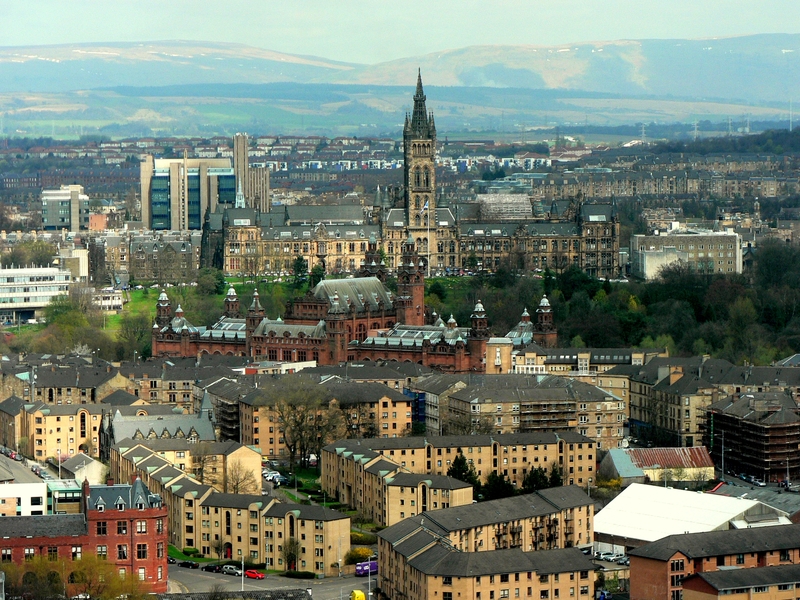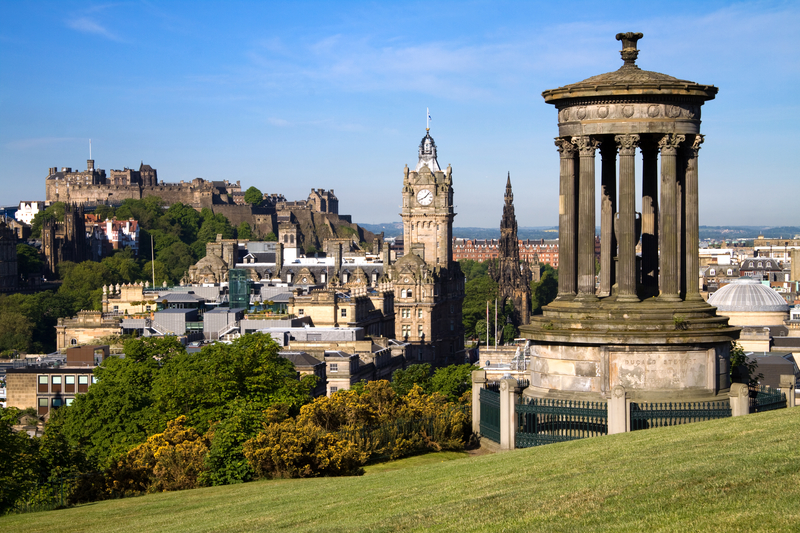DM Design highlight the differences in architecture across Scottish cities and how this provides a unique insight into the history of the country
Scotland’s natural landscape is stunning, and that’s before we start to consider the amazing architecture that can be found around the country. For the short distances between them, three of Scotland’s biggest cities look worlds apart, containing very different architectural histories.
Home design specialists DM Design have taken a look into the architecture of Edinburgh, Glasgow, and Aberdeen to see how they differ, and how political and historic events have influenced the design and construction of buildings there.
Edinburgh
Age of Enlightenment
William Henry Playfair was instrumental in Edinburgh’s Enlightenment. The Enlightenment involved a wave of intellectual and scientific accomplishments. Playfair designed some of Edinburgh’s most impressive buildings, in a classical Greek revival style, earning Edinburgh its nickname of ‘Athens of the North’.
The introduction of the New Town
Edinburgh’s Town Council proposed a new town in 1752, altering the cityscape into symmetrical streets lined with terraced houses. Streets were named in celebration of the Act of Union, including George Street, after the king at the time. Designs also included large, incorporated gardens, shopping centres and green spaces. It was expected the wealthy would live in the New Town.
As the New Town flourished, the Old Town also benefited. Roadways and buildings at the Court and Exchange were also built at this time.
Edinburgh now has 5,000 listed buildings and is a heady mix of the medieval and the modern living side-by-side.
Glasgow
The impact of Charles Rennie Mackintosh
During the 19th Century, the work of renowned architect Charles Rennie Mackintosh transformed Glasgow’s cityscape, architecture and design worldwide.
 Born in Glasgow in 1868, he began his career with an evening course at the Glasgow School of Art, interspersed with an apprenticeship in architecture at the Glasgow practice of Honeyman and Keppie.
Born in Glasgow in 1868, he began his career with an evening course at the Glasgow School of Art, interspersed with an apprenticeship in architecture at the Glasgow practice of Honeyman and Keppie.
Glasgow’s School of Art was – and still is – a buzzing hub of art, design and architecture. In the 1890s, together with his contemporaries Margaret MacDonald, Frances MacDonald and Herbert MacNair, Mackintosh became part of the Glasgow Four, responsible for the ‘Glasgow Style’.
Mackintosh’s style was ornamental and historical, eclectic yet forward-facing. Glasgow Style was similar to this, Art Nouveau, focusing on innovation and decoration. This had a great impact on Scottish architecture, but also furniture and art, including:
- The Glasgow Herald Building.
- Glasgow School of Art commission, merging ‘baronial’, castle-style design and 20th Century building materials.
- Walter Blackie’s ‘The Hill House’ family home. Based on a ‘House for an Art Lover’, this design was minimalist with ornate details.
Designs created by Mackintosh can still be spotted today throughout the city of Glasgow.
Aberdeen – The Granite City
Aberdeen is known as The Granite City (or the Silver City) due to many of the city’s most memorable buildings and homes being made from granite from quarries around the area.
1545 – Provost Skene’s House
One of the city’s few examples of the pre-industrial use of granite, granite is incorporated into rubble walling and sandstone is used for more decorative features.
1820 – Aberdeen Music Hall (The Assembly Rooms)
The front of the music hall was designed by Aberdonian architects Archibald Simpson and James Matthews. By 1961, this area was targeted for demolition, but it was instead refurbished and restored by the District Council in the 1980s.
1946 – Rosemount Square
The much more modern Art Deco style also reached Aberdeen, with Rosemount Square’s circular housing block. It is a stunning mixture of modernity and tradition, with a sculpture of T.B. Huxley Jones being used to decorate the structure.
Due to its costal location, granite was also exported, making Aberdeen the granite capital of the world.
Sources
- http://www.scotland.org/experience-scotland/architecture
- https://www.visitscotland.com/about/famous-scots/charles-rennie-mackintosh
- http://www.crmsociety.com
- http://www.bbc.co.uk/history/british/civil_war_revolution/scotland_edinburgh_01.shtml
- https://www.architecture.com/Explore/ExhibitionsandEvents/Mackintosh/Explore/Glasgow.aspx
- https://www.list.co.uk/article/32178-a-guide-to-the-architecture-and-design-of-edinburgh
- https://www.aberdeencity.gov.uk/web/files/LocalHistory/granitecity_trail_leaflet.pdf
- https://www.agcc.co.uk/blog-article/time-to-big-up-aberdeens-architecture
- http://www.independent.co.uk/arts-entertainment/architecture/dundee-the-city-of-design-thats-pushing-the-boat-out-as-a-cultural-and-creative-powerhouse-9907176.html
- http://www.explore-inverness.com/what-to-do/outdoors/inverness-historic-trail
- http://www.scottisharchitects.org.uk/architect_full.php?id=100284
- http://www.localhistories.org/inverness.html
- http://www.localhistories.org/dundee.html
- http://www.localhistories.org/dundeetime.html
- http://www.scotsman.com/heritage/people-places/scottish-fact-of-the-week-the-granite-city-1-3510261
- http://aboutaberdeen.com/Aberdeen-Music-Hall
- https://www.aberdeencity.gov.uk/web/files/LocalHistory/granitecity_trail_leaflet.pdf
DM Design














